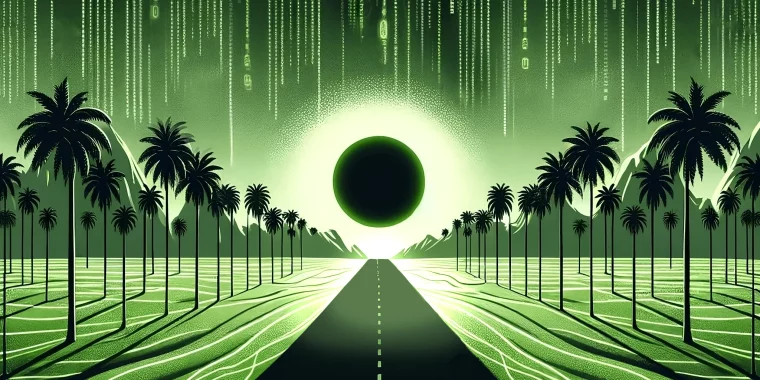
I recently had a great conversation with Michael Sanders, one of the Co-founders at Horizon. He and his team have built an incredible platform that allows game developers to easily access and use blockchain data in game development.
This is the kind of tool that’s going to power the next paradigm shift in modern gaming. There’s a whole podcast conversation on it which I will link below.
🎧 Listen to the Podcast on Spotify | Apple Music | Youtube
Horizon have secured investments from some of the biggest players in the gaming industry, including Take-Two Interactive, Rockstar Studios’ parent company, and Ubisoft games. This cements their position as an innovative start-up looking to bring a whole new layer of interoperability to modern gaming.
This is something I’ve been saying for a while now and it can’t be more relevant than in the cryptocurrency industry. To continue to build this industry, we need to take care of developers. In the famous words of Steve Ballmer — developers, developers, developers, developers, developers.
Taking care of the developers in this space is what’s going to lead to incredible, game-changing end-user experiences.
But the cryptocurrency space has one important challenge to overcome — it’s a young space and there’s tons of complexity that non-blockchain developers have little exposure to.
This is exactly the kind of problem that Michael and the rest of the team at Horizon are working to solve and one of the main reasons for creating Sequence — an all-in-one development platform for web3 games. Sequence does a lot of the web3 heavy lifting so that game developers can continue to focus on crafting immersive worlds.
Before diving deeper into the technical aspects of Sequence and its features, I want to talk a bit about the state of the gaming industry and why gaming studios are adopting or experimenting with this technology.
Do games need Blockchain?
There’s a good case to be made here. What if you owned the loot that you collect in games, in a way that’s not dependent by the game itself?
NFTs can help gamers own the loot that they win in a game, expanding the possibilities beyond the game itself, and into a real market. Imagine you own a rare sword in your favourite MMO game. As an NFT, this would be tied to your wallet address, making you the sole owner of that item.
Because that sword now exists on-chain, you can trade it and interact with it outside the game. But this is just the tip of the iceberg.
If game items are no longer in-game but become out-game items, this means that they can now be integrated into other games. This is where it gets really interesting.
Blockchain-based games can interact with other similar games. Imagine being able to move items across games. Stuff like crafting a sword in Skyrim and then being able to use in Elden Ring would be possilble, but so much more would be possible too.
You could import entire characters, questlines, and even entire maps into other games, creating worlds that we didn’t even think were possible. The kind of interaction that blockchain can add to modern gaming is absolutely mindblowing.
This inter-communication raises the question for NFT standards for gaming items so that gaming studios can start creating assets that are compatible with other games. The folks over at the LTO Network have been in discussions with other people in the industry about potentially creating some kind of standard for game assets, so they can be used across a wide range of games. Think of a Sword — if we’re thinking interconnected game worlds, we need to ensure that the sword can render correctly in 2D as well as 3D, and has properties that are compatible across various games.
So, to put this in just a few words — adding a blockchain component to modern gaming can create truly mindblowing experiences that are currently simply not possible.
How Horizon is changing the game
Sequence, their web3 game creation solution aims to reduce a lot of the complexity associated to blockchain-based games.
Sequence stands out for its comprehensive toolset that simplifies much of the web3 complexity for game developers. Most game developers aren’t also infrastructure developers, let alone blockchain infrastructure developers.
Sequence was designed to eliminate the technical barriers associated with Web3, enabling a seamless transition for traditional game developers into the blockchain space.
Main Features
Smart Wallets and User Onboarding: Sequence introduces smart contract-based wallets that streamline user onboarding and asset management. This means that behind the inventory of any character, there’s a non-custodial wallet but the user doesn’t notice this. It’s all invisible (unless of course, they need to import that wallet somewhere else).
Transaction and Gas Management: One of the significant hurdles in blockchain gaming is the management of transactions and associated gas fees. Sequence takes care of this under the hood so game devs can focus on making great games while Sequence figures out the hidden complexity of settling blockchain transactions, paying for gas etc.
Node Gateway Redundancy: Another limitation when building games with blockchain in mind are node gateways. A node gateway is your access point to the blockchain and its data. Sometimes node gateways fail and die. Meaning that for a while you can’t connect to the web3 layer. Sequennce has a system in place to switch and allocate additional gateways, ensuring that the player or the game can always access the blockchain.
Data Indexing and Interaction: Sequence provides robust tools for indexing blockchain data, enabling real-time interaction with in-game assets and activities. This feature is crucial for developers looking to create dynamic and responsive game environments that reflect the live state of blockchain assets and transactions. You can quickly and efficiently query the chain
Use cases for web3 game development tools
The versatility of apps like Sequence opens up a ton use cases in game development. For instance:
- Trading Card Games (TCGs): Sequence’s infrastructure is ideal for developing blockchain-based TCGs, where players own their cards as digital assets. An example is Horizon’s own SkyWeaver, which utilizes Sequence to enable players to trade, sell, and use cards in a Magic-the-gathering type of game.
- Virtual Economies and Marketplaces: Sequence can power in-game economies where players can truly own, buy, sell, and trade virtual goods in a decentralized marketplace. This not only enhances the gaming experience but also introduces new economic models where players can earn real value from their in-game achievements and assets.
- MMORPGs and Virtual Worlds: For massively multiplayer online role-playing games (MMORPGs) and virtual worlds, Sequence can manage complex player interactions, asset ownership, and cross-world economies. It enables the creation of vast, immersive universes where every item, land parcel, or character attribute can be a tradable, blockchain-secured asset.
In essence, the future of gaming is looking a lot more connected, with items, and worlds that will span beyond a single game and into multiple game worlds. Game economies will be more real, with markets and items tradeable on real-life exchanges.
And with the evolution of VR and AR — who knows just how far we can take this? What are your thoughts on this?
Remember to check out the full conversation for an engaging in-depth discussion around web3 and the future of modern gaming.
🎧 Listen to the Podcast on Spotify | Apple Music | Youtube
Finally, if you’re into Algorithmic trading — check out algorithmic cryptocurrency trading platform Aesir! Aesir is a state-of-the-art trading platform that allows you to build complex crypto trading bots to maximize your gains.
Thank you for reading!
Enjoyed this article?
Sign up to the newsletter
You’ll receive more guides, articles and tools via e-mail. All free of course. But if you value this blog and its educational resources, you can subscribe to become a paid member for only $3 a month. This will keep the website open and free.
